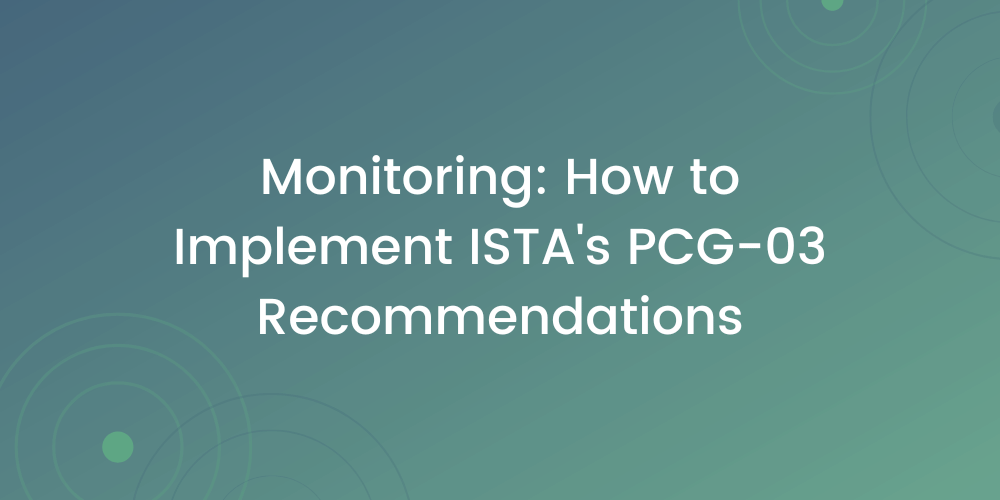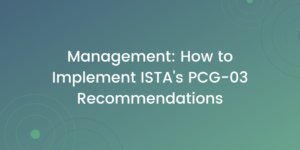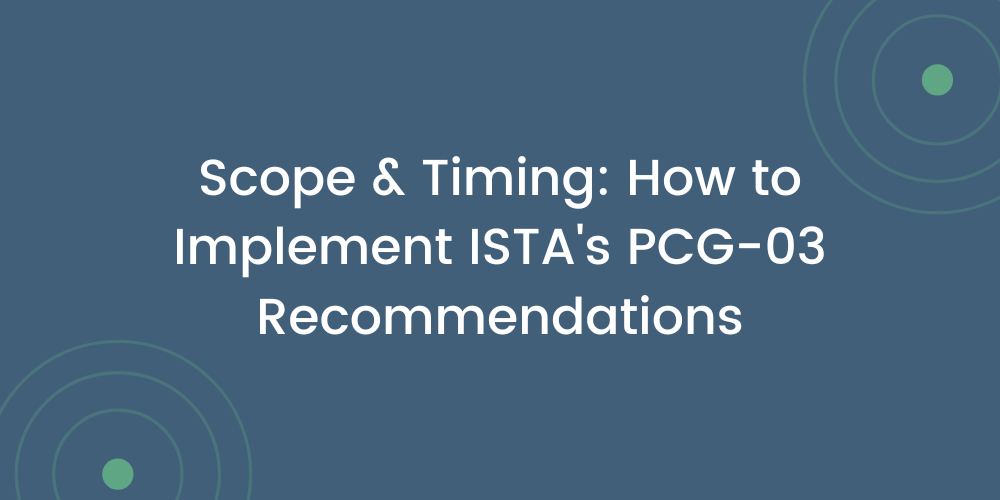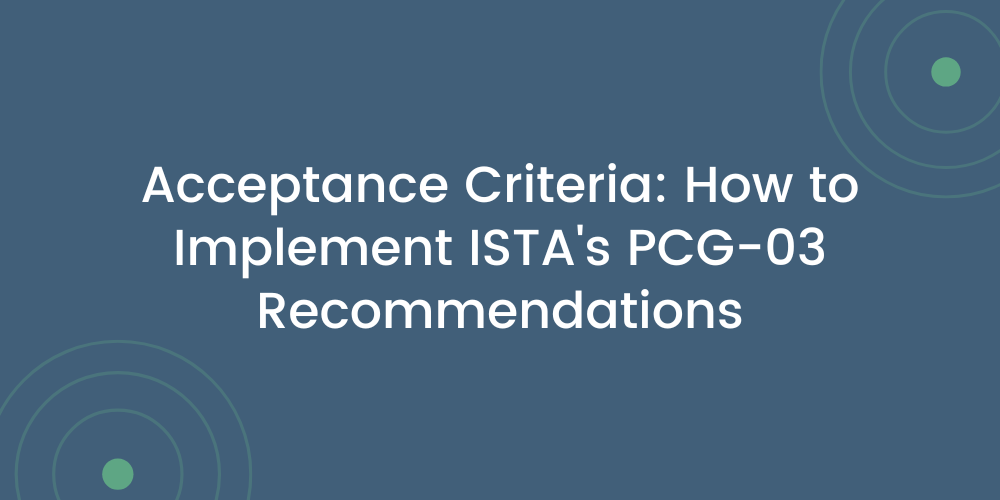Monitoring: How to Implement ISTA’s PCG-03 Recommendations
On July 22nd, 2022, ISTA released PCG-03: Performance Qualification (PQ) and Performance Verification (PV)...
read Details

On July 22nd, 2022, ISTA released PCG-03: Performance Qualification (PQ) and Performance Verification (PV) Best Practice Guideline. PCG-03 takes the first steps toward standardizing best practices for PQ strategy and execution for the biopharmaceutical industry, as it is the first document to compile strategies from thought leaders in the industry and provide a path forward for transport validation work.
We applaud ISTA for this useful and comprehensive list of considerations for determining your PQ strategy. However, there remains a clear gap on how to manage and implement their recommendations. The items listed within the document require further context to enable the industry to form a cohesive approach to PQ strategy.
This article series will seek to dive deep into the considerations listed by ISTA and discuss the implications and risks of each topic. Each article will contain a recommended tactical approach to each of these considerations:
As each article is released, we will link it in the Table of Contents above so you can navigate to each topic. In this article, the experts at Modality Solutions are diving into the Management recommendations found in PCG-03.
This series has covered everything you need to design and execute PQ studies: when to complete PQs, how to design the studies, and how to analyze the returned data. Successful PQs do not, however, mean that your shipping process is now validated. Validation is a state, not a singular achievement, and that state must be maintained.
The validated state is maintained through the interaction of your quality management system and the monitoring and controls strategy. Feedback from either system can trigger a need to re-execute PQ studies. The four most common triggers for the re-execution of PQ studies are:
These risk-driven triggers are explored in depth in this final installment.
All validated processes must be re-examined regularly, even if no reported issues exist. This investigation is standard to account for data not generated by the monitoring and controls strategy and, therefore, not reviewed by the quality management system.
The duration between investigations should be codified in the prevailing quality management system. The frequency of re-executing PQs should be risk-based; processes that pose a higher risk will be investigated more frequently than low-risk processes. In shipping, lanes that do not include temperature monitors may be analyzed more regularly than lanes in which temperature monitors are always used.
Our recommendation is to execute confirmatory PQs at least every two years.
Innovation, continual improvement, process performance, product quality monitoring outputs, and CAPA investigations drive change. These changes have the potential for ripple effects across various processes. A proper change control system within your QMS provides a high degree of assurance there are no unintended consequences of the changes.
These types of changes can occur quite frequently in supply chain operations. Examples can include:
Any of these listed changes could impact the validity of previously executed performance qualifications. For example, changes in courier may affect shipment handling, especially crucial for international shipments where shipper replenishment/recharging is expected. If the shipment service level changes, there may not be sufficient data from the OQ to continue using the current shipper.
All of these changes should be tracked by the QMS and assessed for impact on the shipping process. Quality management procedures should be followed to initiate the change and determine the need to re-execute a PQ study.
Systems and processes should be periodically evaluated to verify that they are still operating in a state of control. These periodic reviews can trigger the need to conduct additional PQs. The review should focus on data demonstrating the process’s overall performance and reliability.
Relevant data for the shipping process include product temperature data, total shipment duration, and any relevant nonconformances or complaints. Data should be analyzed for excursions, trends, and outliers that may show performance drift or a change in operating conditions that affect the validation strategy. Any adverse observations may result in the re-execution of PQs.
Last, all validated processes should have an underlying risk assessment as the basis for quality management. This risk assessment should be a living document revisited according to inputs from the QMS, controls and monitoring strategy, product stability, and other systems.
The inherent risk in each process will inform the validation strategy, affecting decisions such as shipper bracketing, number of study shipments, lane bracketing, etc. As the understanding of risk evolves, the acceptability of the validation strategy in a lane may vary. The re-execution of the PQs may require revisiting previous bracketing strategies or including additional confirmatory shipments to complement previous PQ studies.
This series has now completed the entire circuit of PQs, starting with scope and timing, detailing key considerations of design, guiding data collection and analysis, and concluding with how to manage completed PQs. While ISTA PCG-03 provided a foundation of potential concerns for PQs, we hope this article has acted as the substructure upon which you determine which considerations are necessary for your validation program and how to examine them.
Catch up on the first five articles in the series below:
Modality Solutions is a leading provider of innovative and comprehensive solutions for the biopharmaceutical industry. Our team of experts has extensive experience in the industry and works closely with national and international regulators to ensure that our clients stay ahead of the latest industry developments and best practices. We pride ourselves in providing tailored solutions to meet the unique needs of our clients, and we are committed to helping organizations achieve their PQ goals. Contact us for more information on how we can help your organization navigate the complex world of biopharmaceutical transportation. And don’t forget to follow us on LinkedIn to stay updated on our latest developments.
On July 22nd, 2022, ISTA released PCG-03: Performance Qualification (PQ) and Performance Verification (PV)...
read Details
On July 22nd, 2022, ISTA released PCG-03: Performance Qualification (PQ) and Performance Verification (PV)...
read Details
On July 22nd, 2022, ISTA released PCG-03: Performance Qualification (PQ) and Performance Verification (PV)...
read Details